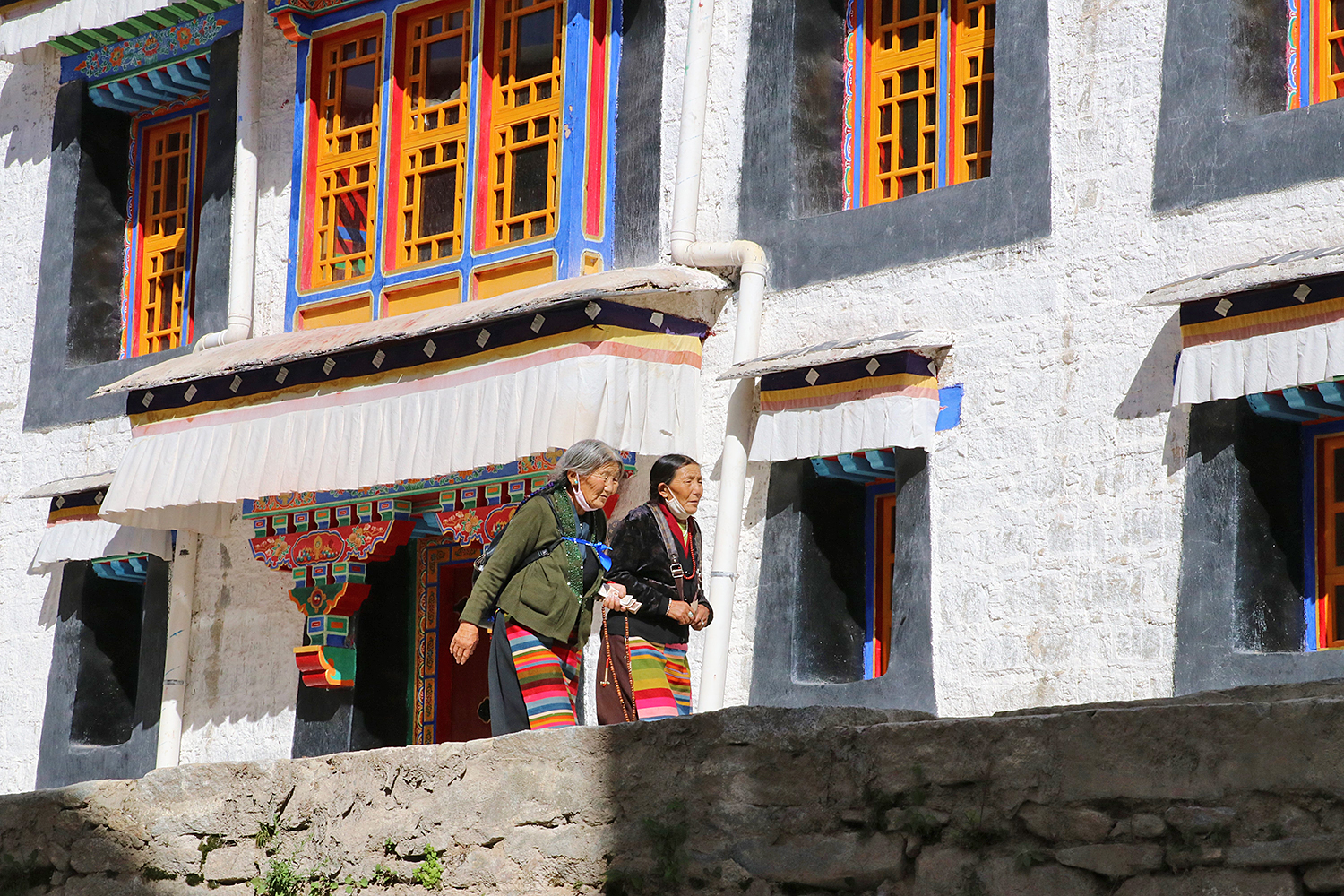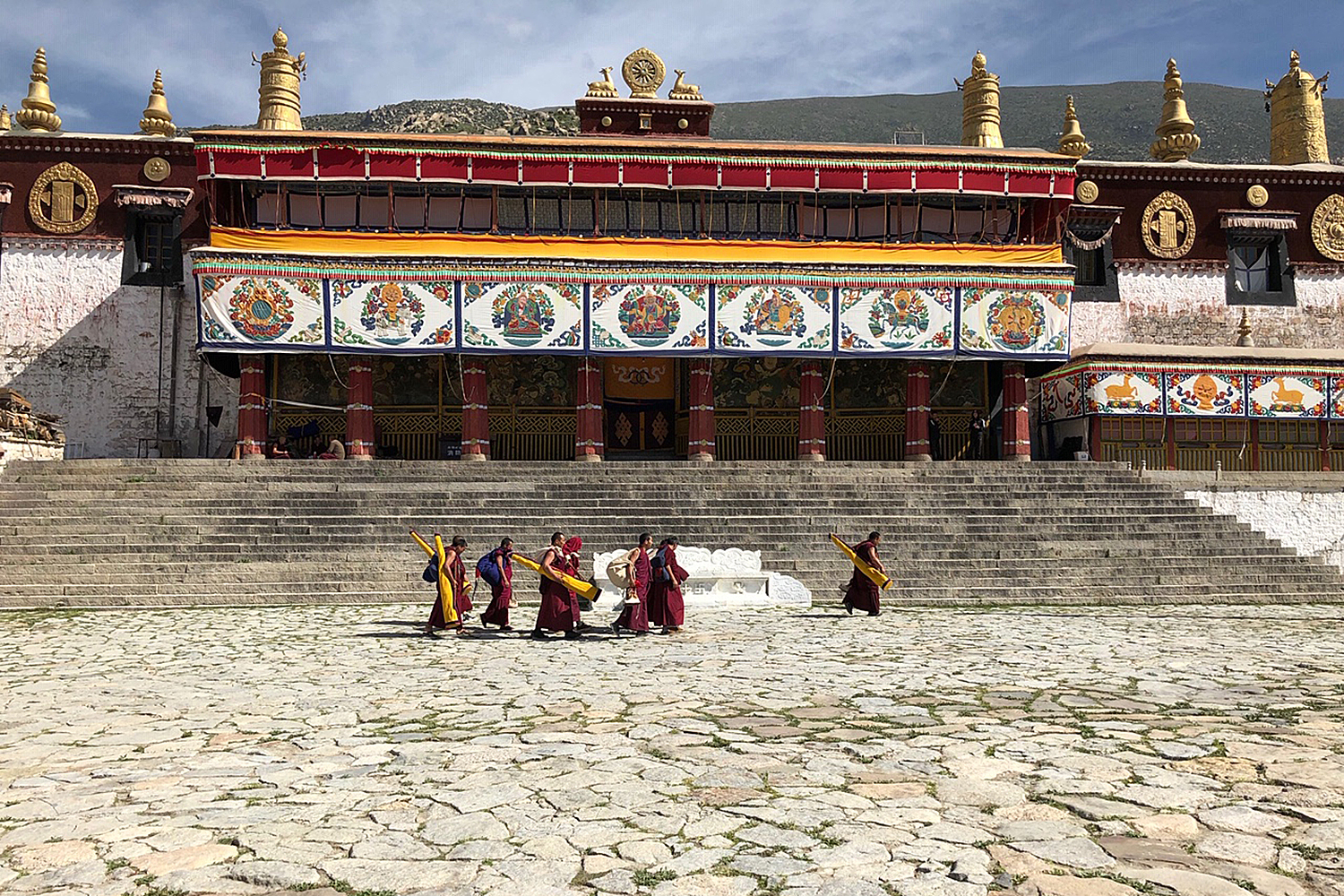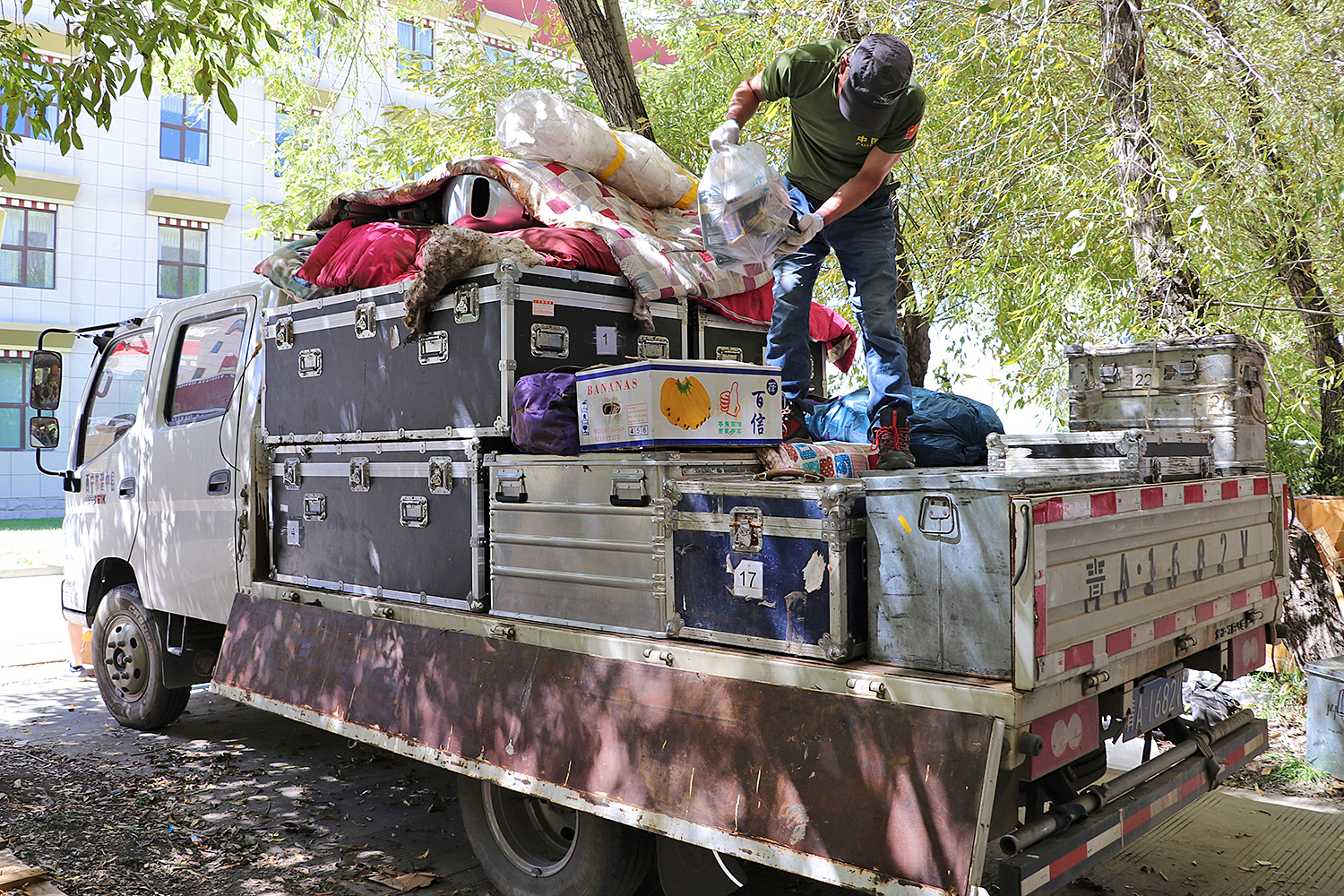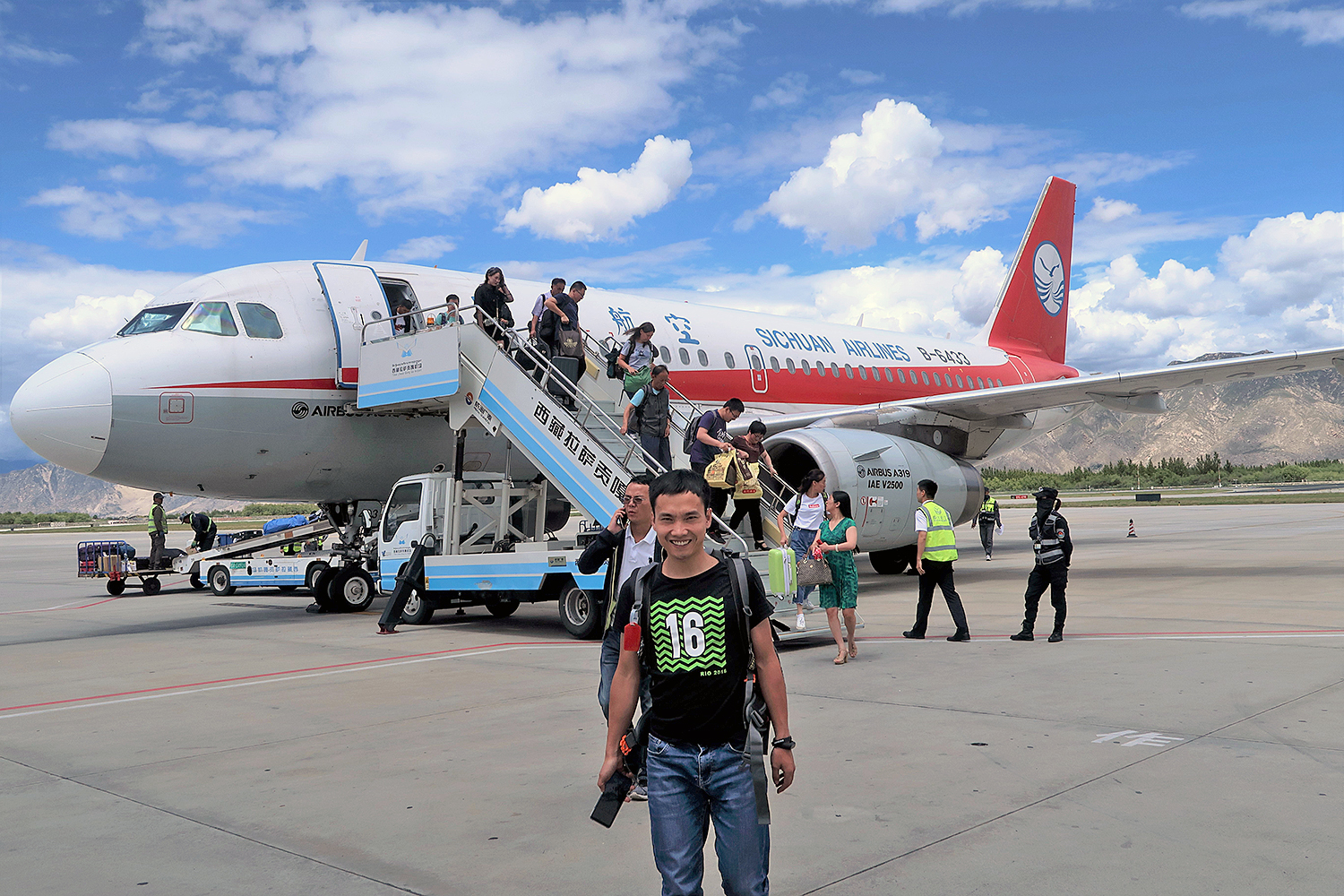Arrival on the Roof of the World Logbook TransTiP - Part 4: Expedition Preparations in Thin Air
The team of the international DFG Research Training Group TransTiP has arrived in Lhasa, the
capital of Tibet. Before entering the campus, the scientists still have a lot to prepare: clarifying
organisational details, checking laboratory equipment, drilling rigs, boats and tents, getting
hospitality gifts. In addition, everyone has to get used to the mountain air. Dr. Nicole Börner, Kim J. Krahn and Alexandra Müller from the Institute for Geosystems and Bioindication report on their first impressions in Tibet.
“On Sunday morning our flight finally left Chengdu for Tibet. After two and a half hours flight time we landed safely in Lhasa at an altitude of 3,600 meters. The pilot bid his farewells to us with the advice that some travellers react very sensitively to the altitude and that we should not overstrain ourselves when getting off the plane. Partially directly on arrival, but at the latest in the evening, the thinner air and the resulting reduced oxygen supply made themselves clearly noticeable to most of the team members. Headaches, dry mucous membranes and nausea are frequent companions at these altitudes. What can you do about it? Drink lots of water, sleep and shift down a gear. Getting up in the morning was difficult at first, but after a few days most of them had acclimatised, even if jogging, climbing stairs and high leaps are still far away.

Traditionally dressed Tibetan women in an old monastery outside the gates of Lhasa. Picture credits: Kim J. Krahn/TU Braunschweig
Lhasa – a city between tradition and tourism
Lhasa is a very fast-growing city, which is now strongly influenced by tourism. Nevertheless, we felt welcome straight away. We got to know the Tibetans as very warm, open and interested. No matter where we walked, everywhere we were greeted by friendly smiling faces in traditional Tibetan robes. Especially children seem to be fascinated by us and seek contact. They are also not afraid to try out the few English sentences they learned at school. Also the still noticeable connection to religion and traditions inspires us again and again.

Monks in front of a temple in Drepung Monastery, one of the largest Buddhist monasteries in Tibet. Picture credits: Alexandra Müller/ TU
Braunschweig
Tetris Chinese style
Of course our work is not neglected between all the new impressions and difficulties with the height. After all, we are going into the terrain on Friday, and there is still a lot to prepare. On Tuesday we went to our Chinese partner institute, the Institute of Tibetan Plateau Research (ITP). In a large group we first discussed organizational details and finally checked the equipment that has been stored there since the last field work in summer 2018. In addition to the typical laboratory requirements, such as chemicals and vessels, our boats, drilling rigs and tents also had to be checked. Depending on what was still missing, lists were drawn up for a final purchase before we started. Also the food needs to be taken care of. And with 21 people, some of whom stay in the field for several weeks, that adds up to a lot.
Afterwards everything had to be packed onto a small truck, which’s loading area seemed much too small at first. But with enough stamina, skill and the right stacking – supported by the experienced Chinese drivers – we were able to successfully stow our things on the way to Nam Co. We will collect them there on Friday. Fortunately, most of our equipment had already been transported by air freight directly to China and has now arrived well at the research station.

Creative loading of the transporter with our equipment by the Chinese drivers. Typically in Tibet the trucks are loaded twice as high. Picture credits: Kim J. Krahn/TU Braunschweig
Very welcome: Hospitality Gifts
During another visit to the ITP, we organized a scientific workshop together with our Chinese colleagues. This started with a lecture about the research work on the Tibetan Highlands by our colleague Yu Zhengliang, who will also accompany us to Nam Co. Afterwards, all scientists came together for an interactive game, the goal of which was to set their own research spaces and time scales in relation to those of their colleagues. Some of us also had the pleasure of being invited to Tibet University. Ciren Yangzong, whom we already met during the summer school, gave a private guided tour of the campus and gave many helpful tips for meetings with Tibetans during the field work. She also told us which hospitality gifts were popular. A little tip: It is sweet and preferably to bring with you from Germany.
In our next article we will report directly from Nam Co about the first days of our field work”.
Text: Dr. Nicole Börner, Kim J. Krahn, Alexandra Müller

